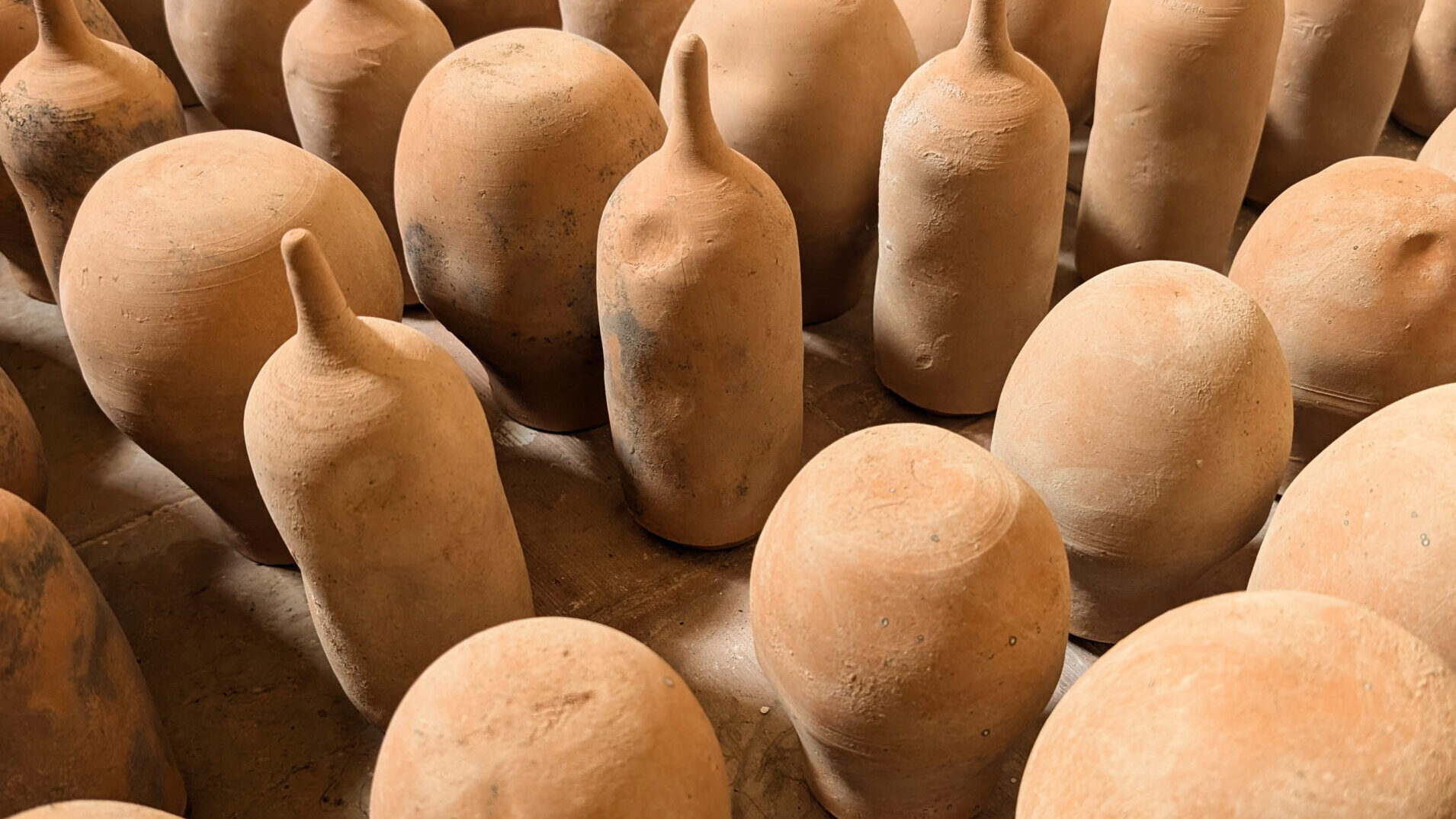Cooking Sections. Rights to Seeds, Rights of Seeds
The artwork Rights to Seeds, Rights of Seeds (2024) by Cooking Sections (founded in London in 2013 by Daniel Fernández Pascual and Alon Schwabe) is installed in dialogue with the collection of colonial-era seeds and agricultural products in the former Colonial Museum. Alongside the work, an in-depth display features a selection of the original jars containing the catalogued seeds. The installation builds on research developed within Monoculture Meltdown, CLIMAVORE x Jameel at the Royal College of Art.
This artistic intervention seeks to preserve a living, heterogeneous collection of peasant seeds that are resilient to drought and thermal stress, which have been cultivated by farmers in southern Italy for generations. The installation stands in contrast to the ideology behind the creation of a colonial seed bank drawn from the local agriculture of the colonized territories—mainly in Eritrea, Somalia, and Libya—which was aimed at increasing the intensive production of monocultures from a select group of seeds to propel the mass development of the Italian agricultural industry.
The installation is a form of cultural-natural reparation. It positions MUCIV as a place where Italian farmers who practice agroecology can deposit and exchange seeds at events held in the sowing and harvest seasons. The work recognizes the agricultural heritage of Italian seeds as a resource to be protected and sustained through cultivation.
The Cooking Sections installation—acquired by MUCIV thanks to PAC2024 – Plan for Contemporary Art promoted by the Directorate-General for Contemporary Creativity of the Ministry of Culture—lays the groundwork for long-term collaboration between the museum and farming communities that is facilitated Monoculture Meltdown, CLIMAVORE x Jameel at the RCA. An annual “seed exchange” protocol has been established, formalizing the museum’s custodianship of unregistered seeds. These seeds remain free from ownership claims, patents, or commercial restrictions, circulating as a living collection for which the museum acts as guarantor. With contributions from scholars, legal experts, and consultants on the rights of nature, the installation supports the development of new legislative frameworks that recognize seeds as ecological and cultural agents rather than mere commodities. Thus, MUCIV becomes a civic platform for seed justice, connecting the custodianship of material and immaterial assets, environmental ethics, and support for the coevolution of humans, landscapes, and plants.

